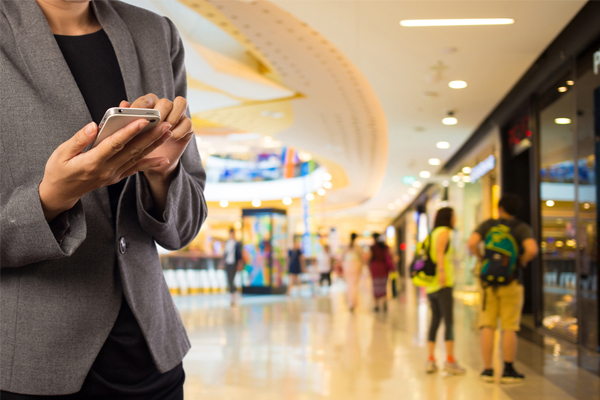Everywhere you look, technology is disrupting how customers interact with companies and brands. And one of the primary technological forces driving this disruption is the ubiquity of mobile devices.
Mobile provides two things that (almost) every shopper desires: speed and instant gratification. So in a world where people can signal their likes and dislikes with a swift swipe to left or right, share their tastes with friends in an instant, and make decisions via the slightest tap, what does this mean for retailers?
At the very least, it means ensuring products are quick and easy to browse and buy on a mobile device. But with 30% of all e-commerce transactions now taking place on a mobile device, according to Criteo, that’s a no-brainer. To be truly disruptive, retailers need other ways to engage and inspire customers, and differentiate their brand from competitors.
Four areas we see retailers using mobile to reimagine the customer experience:
1. Mobile Apps
These days, a slick, responsive website is just the price of entry to success in mobile retail. To truly engage customers, it’s all about giving them an experience that feels meaningful, special and different. Many forward-thinking retailers are achieving that with mobile apps that let users do everything from sharing their thoughts with friends to managing their wedding list.
UK retailers can look to the iconic US chain Macy’s (disclosure: a Salesforce customer) as a case in point. It has aggressively pursued a strategy to integrate its bricks and mortar stores with the digital experience delivered through Macys.com, Bloomingdales.com, and mobile sales channels. And apps have played a major part in that strategy.
First up was a social sharing app that allows shoppers to select items from the Macy’s website and instantly create a Facebook poll where their friends can vote on what they should buy. Since the success of the social sharing app, Macy’s has launched over 40 more, including apps for gift card registration, customer journeys and personalisation, and real-time inventory and search.
2. Contactless
With the launch of the Apple Watch with Apple Pay, contactless payments just got even easier. (No need to even take your phone out of your pocket!) But taking payments isn’t the only way retailers are capitalising on the contactless revolution. Mobile wallets are ideal repositories for mobile coupons that can be redeemed during a contactless payment – giving consumers a fast and easy way to get discounts on their shopping.
And as the proportion of smartphone owners who have used – or plan to use – a mobile wallet approaches 40%, there’s never been a bigger opportunity to use mobile coupons to encourage loyalty.
“A mobile ad can now include a coupon which will live on your phone in your mobile wallet. That’s not just a nice call-to-action or the digital equivalent of clipping a coupon. That’s an active app-like functionality which will ping you when you go near the store at which you can redeem it.” - Venturebeat, 9 June 2015
3. Location-based
GPS functionality is now ubiquitous in modern smartphones and becoming more accurate, enabling retailers to target opted-in shoppers with timely, personalised offers based on their geographical location. Both Starbucks and Asda trialled geotargeted advertising during Christmas 2014, and reported higher footfall as a result.
In an even more targeted version of the same strategy, in-store beacons can identify when a known customer enters a store, and propose relevant offers, discounts and useful information as they browse. Tesco, Mothercare and House of Fraser are all experimenting with beacons, and they’re widely expected to take off among UK retailers.
4. The sharing economy
Another recent shift on the mobile front has been from shoppers owning products outright to sharing them instead.
While consumers might not want to rent a produce item, other items such as clothes, jewellery, bags, cars, and even electronics are fair game. This new social model allows for more consumer choice and better interaction with brands.
For example, the UK’s Girl Meets Dress has taken the dress hire concept to the internet, creating a ‘universally accessible’ designer wardrobe for hire at a fraction of the price of purchase. Meanwhile, luxury designer handbags are available in a similar manner from The Handbag Rental.
Dive deeper into digital retail strategies with our e-book
Mobile is just one of four ways we see modern retailers are using new technologies to boost business, retain customers and differentiate from other brands. For more insights into how new technology approaches are disrupting traditional retail business models, read our e-book: Engage With Today’s Customers: 4 Ways Retail Can Reimagine Business.








